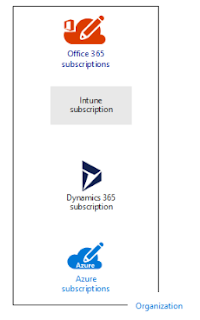Data Storage
Key factors in deciding the optimal storage solution:
- How should you classify your data?
- How will your data be used?
- How can you get the best performance for your application?
Classification of Data
Application data can be classified in one of the three types:
1. Structured Data
- Data that adheres to a strict schema, so all the data has the same fields or properties.
- Structured data is often stored in database tables with rows and columns with key columns to indicate how one row in a table relates to data in another row of another table
- Referred as Relational Data
Benefits:
- The shared schema allows this type of data to be easily searched with query languages such as SQL (Structured Query Language).
- This capability makes this data style perfect for applications such as CRM systems, reservations, and inventory management.
- Structured data is straightforward in that it's easy to enter, query, and analyze.
Cons:
- All the data follows the same format. However, forcing a consistent structure also means evolution of the data is more difficult as each record has to be updated to conform to the new structure.
2. Semi-structured Data
- Semi-structured data is less organized than structured data, and is not stored in a relational format, as the fields do not neatly fit into tables, rows, and columns.
- Semi-structured data contains tags that make the organization and hierarchy of the data apparent - for example, key/value pairs.
- Referred as non-relational or NoSQL data.
Serialization:
- The expression and structure of the data in this style is defined by a serialization language.
- Data serialization languages are important because they can be used to write data stored in memory to a file, sent to another system, parsed and read.
- The sender and receiver don’t need to know details about the other system, as long as the same serialization language is used, the data can be understood by both systems.
Common Serialization Languages:
- XML, or extensible markup language
- JSON – or JavaScript Object Notation
- YAML – or YAML Ain’t Markup Language
3. Unstructured Data
- The organization of unstructured data is ambiguous.
- Unstructured data is often delivered in files, such as photos or videos.
- The video file itself may have an overall structure and come with semi-structured metadata, but the data that comprises the video itself is unstructured.
- Therefore, photos, videos, and other similar files are classified as unstructured data.
Examples:
- Media files, such as photos, videos, and audio files
- Office files, such as Word documents
- Text files
- Log files

Comments
Post a Comment